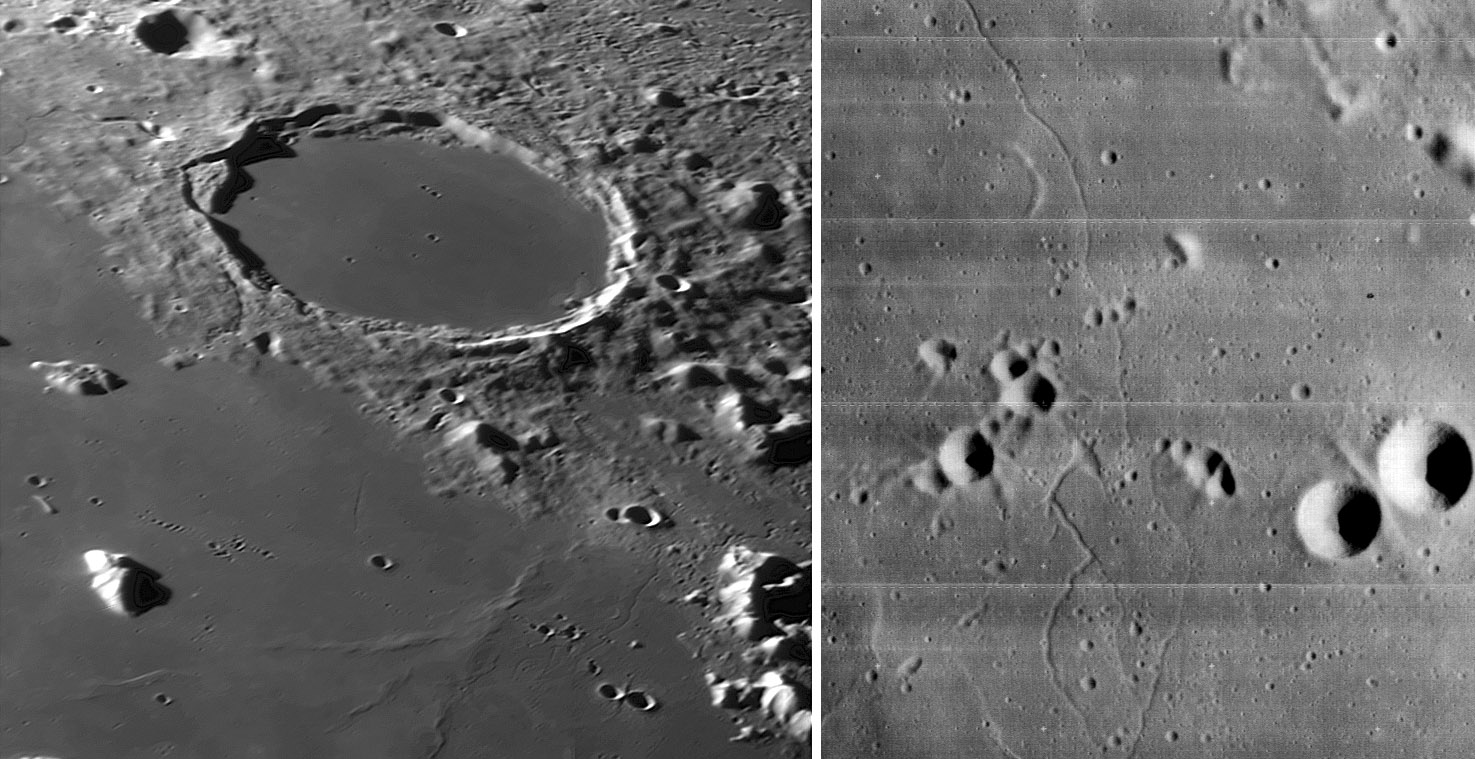
left image by Wes Higgins, Oklahoma, and right image from USGS Lunar Orbiter Digitization Project.
The return of LPOD on Jan 17, 2006 was celebrated with Wes’ phenomenal image of Plato and the small rille on its western side that cuts across nearby Mare Imbrium - that rille is just visible on this new image. And this view of Plato also reveals delicate rilles to its east. Back in 1964 in The System of Lunar Craters catalog and maps that I worked on under Dai Arthur, we named the main visible rille here Plato Rille II. But this image - and the confirmatory one from Lunar Orbiter - shows that there are two inter-related rilles here. Rille II originates in the mixed mare and Imbrium debris to the east of Plato and wiggles across that terrain and down onto Imbrium. But these two images also show another narrower rille that starts in an elongated depression and follows an angular path. Strangly, this rille joins the extension of Rille II - I don’t know how to explain it. Wes’ image also suggests that the short rille actually extends further southward than is shown on the high Sun Orbiter view. A few other things here warrant comment. The cluster and short lines of overlapping craters at bottom right are secondaries (from ?). And to the far right are two nearly tangent craters, Plato K and KA. The perpendicular ridge extending between K and KA is a very diagnostic landform. According to high velocity impact experiments, such transverse ridges are produced when the two craters are formed nearly simulataneously, as commonly happens with secondary craters. Nearby to the north are Plato J and an unlettered crater; two craters that seem to each cut each other’s rims - another characteristic of simulaneous impacts. If the pairs K and KA and J and its close neighbor are secondary craters there should be a primary to the west - is it Aristarchus? This has been a most delightful exploration - thanks for the surprising image, Wes!
Technical Details:
September 14, 2006, 18″ Starmaster reflector, 4x Powermate, Infinity 2-1M camera.
Related Links:
Rükl plate 4
Wes’ website
For near-simultaneous impact images see Fig 3.7 of Wilhelms’ The Geologic History of the Moon
Now you can support LPOD when you buy ANY book from Amazon thru LPOD!
COMMENTS?
Register, and click on the Discussion tab at the top of the page.



